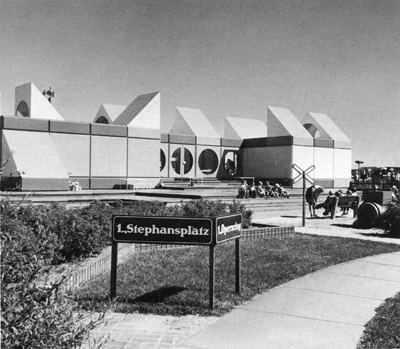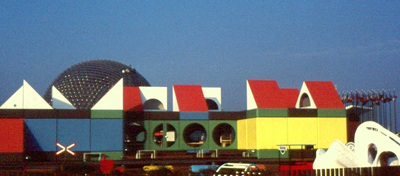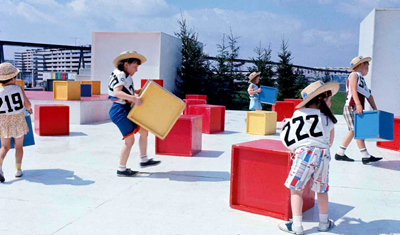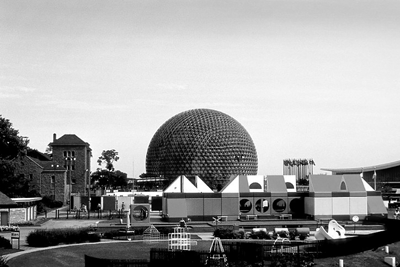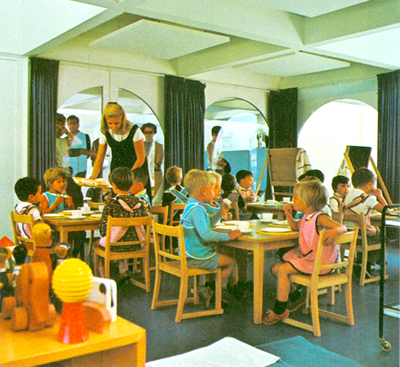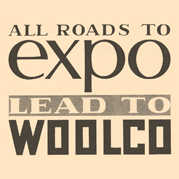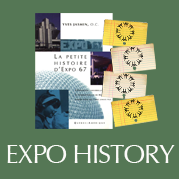PLB's "Expo 67" T-Shirt
 Hot on the heels of the fab Montréal t-shirt, designer Pier-Luk Bouthillier proposes another Montreal-themed design for PLB's fall 2010 collection.
Hot on the heels of the fab Montréal t-shirt, designer Pier-Luk Bouthillier proposes another Montreal-themed design for PLB's fall 2010 collection.This time, the inspiration is the ultimate symbol of 60's Montreal: Expo 67!
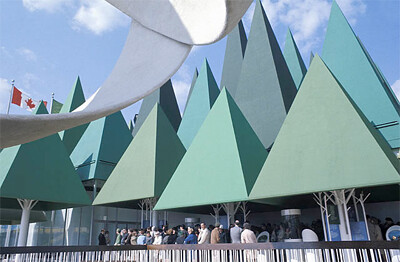 The t-shirt pays homage to the groovy Pulp and Paper pavilion at Expo 67 (above), a structure in the form of a stylized forest.
The t-shirt pays homage to the groovy Pulp and Paper pavilion at Expo 67 (above), a structure in the form of a stylized forest. While 1967 saw trees as little more than raw material destined for consumption, hindsight has taught us the importance of healthy forests: trees are living, breathing plants which remove unwanted greenhouse gases from the air, replacing them with life-sustaining oxygen.
While 1967 saw trees as little more than raw material destined for consumption, hindsight has taught us the importance of healthy forests: trees are living, breathing plants which remove unwanted greenhouse gases from the air, replacing them with life-sustaining oxygen.PLB's design taps into the optimism and design aesthetic of Expo 67, making it relevant today. Organic cotton and water based inks complete the message.
And who better to model an Expo 67 t-shirt than yours truly...?
Click here to order.
 images: (1-4) Bonnalie Brodeur, photographes
images: (1-4) Bonnalie Brodeur, photographes(2) PLB Design
(3) library and archives Canada
Labels: fab fashion, PLB
